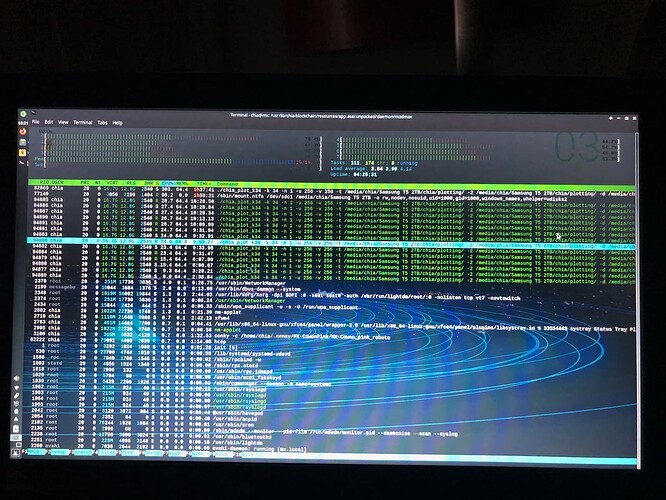It is in the 50s outside. I keep the laptop near a window that is cracked open, and cold air is constantly flowing around it.
It is designed to throttle down, accordingly. I do not feel that there is a meaningful risk. And if I feel it getting hot, or someone can tell me how I can check the thermals in Linux and I see that it is running hot, then I will discontinue the experiment.
The laptop is plugged in. The battery was not being used.
How do you know that?
I have used the T5 to create hundreds of plots on my AMD Ryzen 9 5950X. The T5 is fast, and has never throttled. It also never gets hot (just a bit warm).
That is true for mechanical USB drives, and for other SSD based USB drives (including the T7). But the T5 was designed to be hammered, sequentially and randomly. It will out-perform any consumer SSDs (including NVMe’s) that are bundled with computers.
The T5 will hold its own against the Samsung 980 Pro (it will lose, but it will stay in the race).
The T7 is designed to be much faster than the T5, but only until its cache gets consumed (which Chia will do, quickly – it then becomes a snail). But the T5 is uniformally fast.
Something was bottlenecked. But my Linux skills are minimal.
I ran “top”, and it showed that madmax was using 79% CPU cycles. But it also showed that some ntfs process was using 89% CPU cycles. So that readout confused me.
When I get MX Linux running, I will install “htop” (I hear it is very good). Or I will install something else, if anyone has a suggestion.
I will know, either way, whether it is worth the effort.
If a K32 plot completes, I will just delete (I am replacing my K32s with K34s). I would rather not create a file that I will not be using. I might as well see how it does with a K34. If it drags on forever, I will just kill it and forget the whole thing. That will probably be the case.
By the way, I have an ancient Dell laptop with a Core Duo CPU. It is slow. No, no, no. What you are thinking is wrong. It is slower. 
I use it to backup my iPhone (I do not back-up to the “cloud”).
I got it for free from my cousin, when he could no longer deal with its limping, and he purchased a new laptop. Whatever possessed him (his wife) to purchase that slug is a mystery (his wife). 
It has only 2 or 4 GB of memory (I do not recall right now). Even if it supports more, I will not spend a nickel on it. But if it had enough memory, I would have it create a K34. It would probably take 3 -6 months. Now that is a textbook case for misuse of hardware. In fact, booting up that laptop is a misuse of hardware. 

 )
)
 ) till i build a seperat plotter (it takes about 15h per plot).
) till i build a seperat plotter (it takes about 15h per plot).